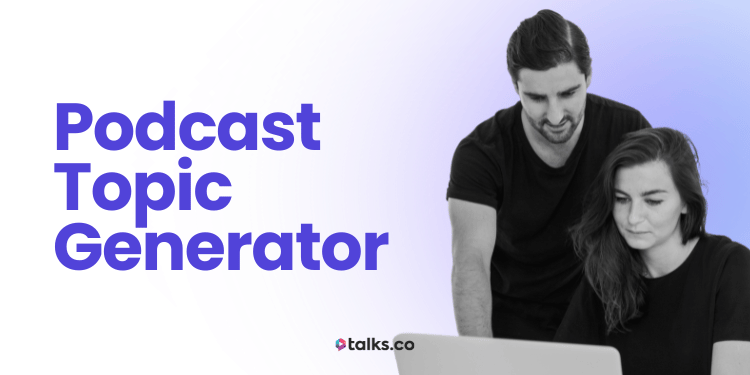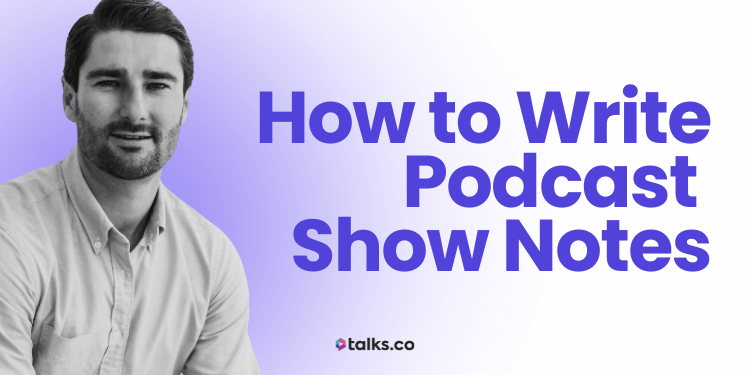Thinking of launching a podcast but figured it’d cost too much? Been there.
Back in 2015, I kicked off my first interviews using Zoom, a Blue Yeti, and a dodgy webcam I still own. No studio. No budget. Just enough podcast equipment to get going.
Since then, I’ve recorded hundreds of podcast episodes on both sides of the mic and I’ve learned what actually matters to make your podcast grow.
And here’s the best part: You can create a podcast without spending a cent.
In this step-by-step guide, I’ll show you exactly how to start a podcast for free. What tools to use, where to host, how to record and edit your podcast, and how to make it sound solid from the start.
If you’re a coach, speaker, author, or expert wanting to grow your brand and reach more people, podcasting’s one of the best (and cheapest) ways to do it.
Let’s get your podcast off the ground without burning through your savings.
What Is a Podcast?
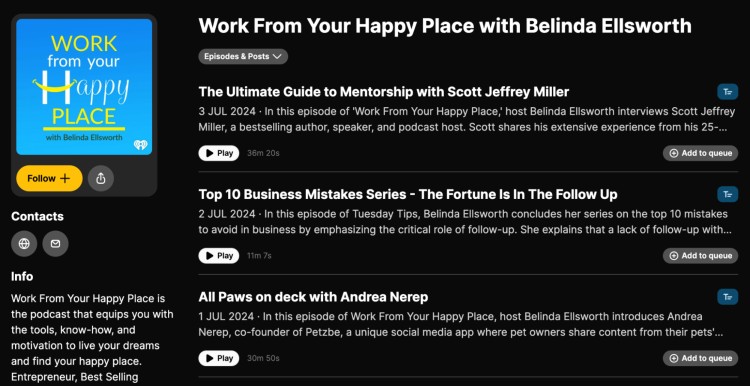
A podcast is an audio or video show people can stream or download from podcast directories like Apple Podcasts, Spotify, or YouTube. Podcast listeners hit subscribe, listen to your podcast content on their own time, and keep coming back for more new podcast episodes.
You choose the podcast format, pace, and focus. Maybe it’s solo mindset tips. Maybe it’s guest interviews on business, wellness, or personal growth.
Here’s why podcasts work so well:
- People hear you: Your tone, energy, and style cut through in a way social posts never will.
- No word count limits: You can share full ideas without cramming them into a 60-second reel or 280 characters.
- Built-in podcast distribution: One upload and you’re on Spotify, Apple, Google. The platforms handle the rest.
- Episodes stack over time: Someone might find your episode “How I Signed 10 Clients Without Ads” six months after you publish it and still become a lead.
- Listeners binge: Podcast fans don’t just listen to one podcast topic. They queue up a few and hang out for the long haul.
10 Benefits of starting a podcast
If you’re a coach, expert, author, or speaker, podcasting isn’t just a way to talk. It’s a way to build something that grows your reach while you get on with your day.
- Warmer leads without chasing: A sales call hits different when they’ve already listened to three episodes of The Gut Fix Show or Coaching Unfiltered.
- Content that keeps working for you: Repurpose one episode into clips, emails, blogs so you’re not starting from scratch each time.
- You stop relying on algorithms: Podcasts show up in podcast directories and stay discoverable long after you hit publish.
- Build trust at scale: Listeners feel like they know you. That connection runs deeper than a feed post ever could.
- Attract better-fit clients: A career coach who listens to The Gentle Leadership Way already knows what you stand for before they ever book a session.
- Easier expert positioning: It’s one thing to say you’re an authority. It’s another thing to host 200+ episodes with top experts in your space.
- Grow your network fast: Interview someone you admire and now you’re on their radar. They promote the episode, and new people discover you.
- Level up your communication: Every episode sharpens how you speak, teach, and explain your message.
- No gatekeepers: You don’t need permission to publish. You can record the Shifting Souls Show from your living room and be live on Spotify an hour later.
- Create a long-term asset: Your podcast becomes a bingeable library clients, media, and collaborations can always revisit.
Can You Start a Podcast for Free?
Yes, you can absolutely start a podcast for free. And not in a dodgy, “kind of free but actually not” way.
There are legit platforms that let you record, edit, host, and publish without paying a cent. I’ve used them. So have plenty of coaches and creators I know.
You just need to keep your podcast production setup simple and focus on the content, not the gear.
Do you have to pay to start a podcast?
Nope. You don’t have to spend a dollar if you don’t want to.
You can:
- Record every podcast with free tools like Audacity or your phone.
- Edit with browser tools like GarageBand (Mac) or Kapwing.
- Host on Spotify for Podcasters, Acast, or other free platforms.
- Promote your podcast through your newsletter, socials, or by being a guest on other shows.
If you want to invest later on a new podcast microphone, a paid podcast hosting service, or a professional-quality editor, that’s your call. But it’s not required to grow your podcast.
Does it cost money to start a podcast?
Technically… no, it doesn’t cost money to start a podcast. But there are trade-offs.
You can do everything 100% free, and that’s fine. Plenty of the best podcast shows started with just a podcast name, a laptop mic, and free podcast editing software.
What matters more is your message, not your setup. Once you’re ready, you can upgrade. But you don’t have to start there.
How to Start a Podcast for Free
Here’s everything you need to launch your podcast from scratch (audio, video, solo or with guests) using the gear you’ve already got and a few free tools.
Whether you’re starting The Nutrition Reboot, Mindset for Makers, or The 5 AM Leadership Show, this cheap podcast setup will get you sounding studio-quality without spending a cent.
What do I need to start a podcast for free?
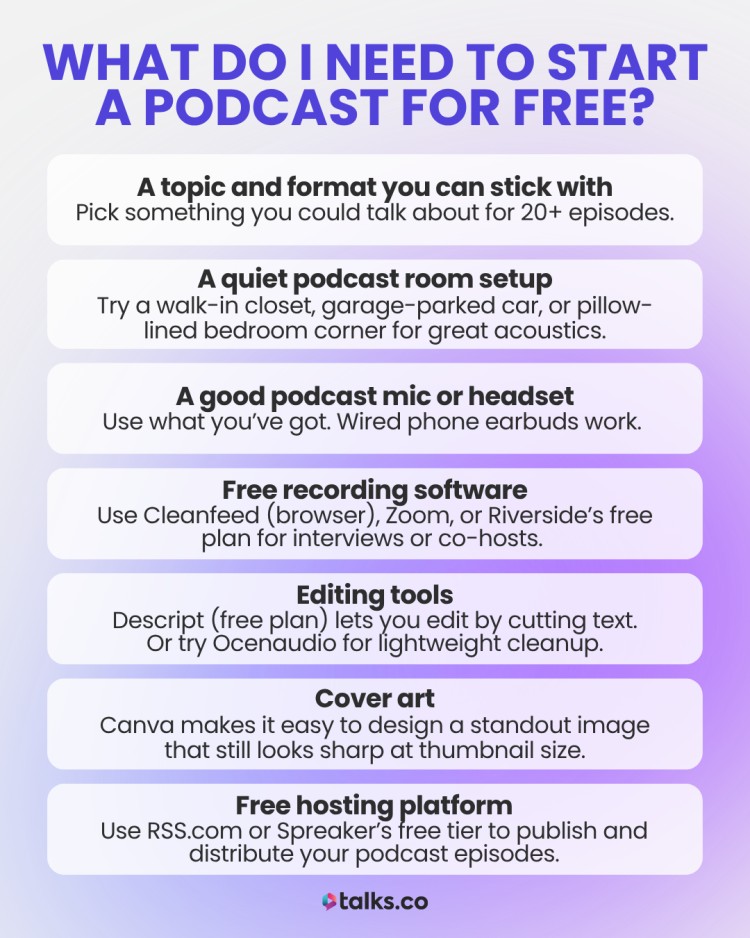
You don’t need a studio setup to sound like you know what you’re doing. Here’s what actually matters to launch and grow your podcast.
- A topic and format you can stick with: Pick something you could talk about for 20+ episodes. If you’re a fitness coach, try: “Strong Dads Over 40. No Gym Required.”
- A quiet podcast room setup: A walk-in closet, car parked in a garage, or a pillow-lined corner of your bedroom can all give you great acoustics.
- A good podcast mic or headset: Use what you’ve got. Wired phone earbuds work. Upgrade to a Samson Q2U later if you want.
- Free recording software: Use Cleanfeed (browser), Zoom, or Riverside’s free plan for interviews or co-hosts. (Here’s a full list on the best podcast recording software you can choose from.)
- Editing tools: Descript (free plan) lets you edit by cutting text. Or try Ocenaudio for lightweight cleanup.
- Cover art: Canva makes it easy to design a standout 3000x3000px image that still looks sharp at thumbnail size.
- Free hosting platform: Use RSS.com or Spreaker’s free tier to publish and distribute your podcast episodes.
What equipment do I need for a podcast?
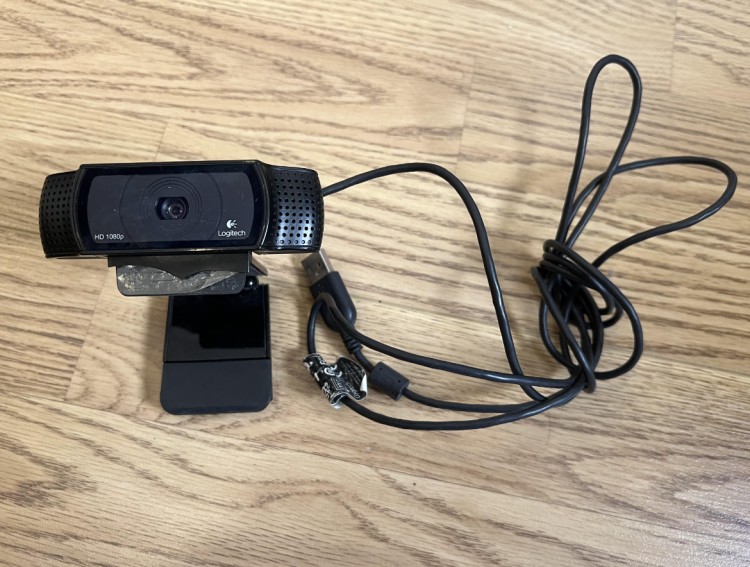
You don’t need to spend much on a podcast equipment bundle to get started. Here are some affordable and free options to consider:
- Laptop or desktop computer: Use what you’ve got to run your recording and editing tools. (Here are the best laptops for podcasting from budget-friendly to top-tier options.)
- Use your phone’s built-in mic: Ready to record anytime without extra gear.
- Affordable USB microphones: Models like Tonor TC-777 or Fifine K669B boost audio quality for under $40.
- Basic wired headphones: Essential for monitoring your sound and catching background noise.
- Pop filter or foam windscreen: Helps soften harsh sounds and reduce mic pops.
- Mic stand or tripod: Keeps your mic steady and positioned right for consistent sound.
- Portable mic shields: Small, foldable acoustic panels you can place around your mic for cleaner audio.
- Comfortable chair and desk setup: Helps you stay focused and consistent during recordings.
Start simple with gear you already have, then upgrade as your podcast grows.
How to start my own podcast for free
You’ve got the tools. Now here’s the step-by-step to get your first podcast episode out into the world.
- Outline your first 3-5 episodes: Start with podcast topics or a podcast concept your audience will care about. If you’re a coach, maybe: “How I Signed My First 5 Clients” or “The 3 Pricing Mistakes New Coaches Make.”
- Record your first episode: Start simple. No need for music or effects yet when you record your podcast. Focus on getting through the episode clearly. Use bullet points, not a word-for-word podcast script. (Read this for tips on how to start a podcast script.)
- Edit and clean up: Cut awkward pauses, clean up background noise, and maybe add a short podcast intro.
- Create your show title + description: Be clear and specific when you create podcast titles and descriptions, like “The Burnt-Out Coach Podcast: For Women Entrepreneurs 50+.”
- Upload to a hosting platform: Use Spotify for Podcasters to set up your show, upload your audio file, add your cover art, and hit publish.
- Submit your podcast to Apple Podcasts: You’ll need an Apple ID and access to Podcasts Connect.
- Share it with your audience: Post a teaser on your Instagram, drop the link in your newsletter, and text a few clients or friends you trust to check it out as part of your podcast marketing.
How to start a video podcast for free
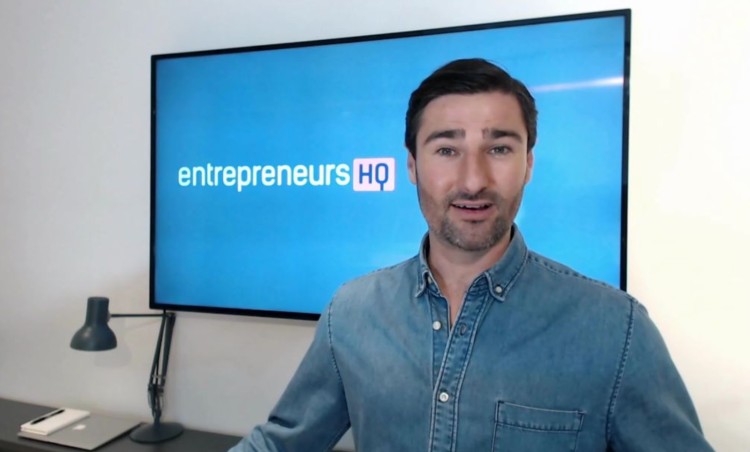
Want to show your face, too? Here’s how to do a video podcast without spending anything.
- Record with OBS Studio: Great for solo or remote interviews. Offers high-quality video and scene-switching. (Read this for tips on how to record a podcast remotely.)
- Use natural lighting: Face a window or use a cheap ring light if you’re recording at night.
- Keep your background clean: Simple shelf or wall is all you need. Just avoid distractions.
- Film in landscape: Horizontal works best for YouTube and clips.
- Edit with Shotcut or Clipchamp: Both free, both great for trimming, subtitles, and social-ready exports.
- Upload full episodes to YouTube: Add branded thumbnails with Canva and use searchable titles.
- Pull clips for social: Use Descript to create 30- to 60-second reels for TikTok, Instagram, or LinkedIn.
How to start a podcast channel for free
Your podcast channel is where all your episodes live, like a hub your audience can come back to, binge, and share around.
Here’s how to do it:
- Pick a free host: Try Podbean (5 hours free), RedCircle, or Pinecast (with referrals). Each gives you a link to share.
- Set up your show: Add your podcast title, podcast artwork, and a short podcast description. Make it obvious who the show’s for.
- Upload an intro episode: Just two to three minutes introducing yourself and the podcast.
- Share your link: Bio, email signature, podcast guest profiles. Make it easy to find.
- Stay consistent: One episode every two weeks is fine. Quality beats frequency.
- Optional extras: Upload your episodes to YouTube, and group all your links using Linktree or Carrd.
That’s it! Your channel’s live. Now all you’ve got to do is keep showing up.
How to start a podcast for free on Spotify

Spotify for Podcasters makes launching easy. No gear, no spend, just upload and go.
- Create a free account: Go to podcasters.spotify.com, log in with your Spotify ID, and click “Start a podcast.”
- Add your show details: Add your title, description, and square cover art (3000×3000 px). Make it clear who your show is for; think “Money Mindset for Coaches” or “The Freelance Fix.”
- Upload your first episode: Drag in your audio file (MP3, M4A, or WAV). Add a title, summary, and mark it clean or explicit.
- Verify your RSS feed: Spotify will send a code to your podcast RSS feed email. Paste it in to prove it’s yours.
- Turn on RSS distribution: Go to Settings > Availability and toggle on “RSS distribution” to push to Apple, Google, and more podcast directories automatically.
- Keep adding new episodes: Use the same process (i.e., upload, title, notes, publish). Spotify will push it to subscribers and other directories you’ve linked. You’ll track analytics (plays, listen time, audience) inside the dashboard.
- Already hosted somewhere else? You can import your existing show using your RSS feed. Spotify will pull in everything without losing listeners.
Quick tip: Spotify now supports video episodes and ad revenue sharing. Don’t use music you don’t own. They’re strict about copyright.
How to start a podcast for free on Apple
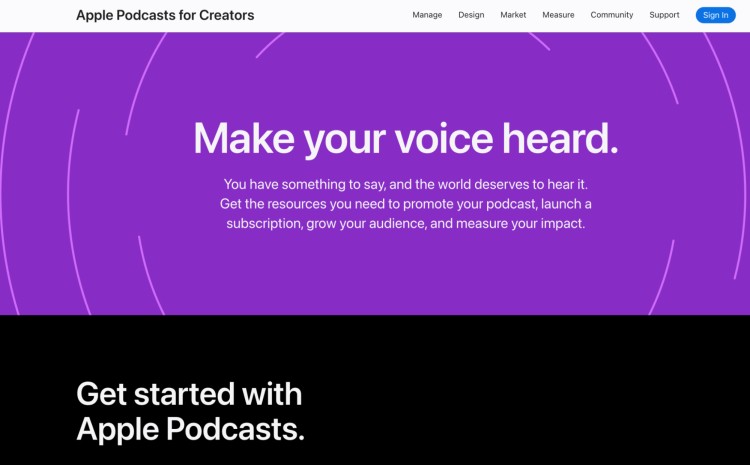
Apple Podcasts is still the top dog for reach, with millions tuning in every day. Getting your show there is free and straightforward.
Here’s how to distribute your podcast to Apple Podcasts:
- Create an Apple ID: Sign up for Apple Podcasts Connect if you don’t already have one.
- Prepare your podcast details: You’ll need your RSS feed, title, description, and cover art (1400×1400 to 3000×3000 px).
- Get your RSS feed: Apple doesn’t host your audio. You’ll need a hosting service that gives you an RSS feed URL to submit.
- Wait for approval: Apple reviews new shows in one to three days. You’ll get an email once it’s live.
- Claim your podcast: If it’s already listed but not under your control, claim it to access analytics and make updates.
Quick tip: Make sure your cover art and podcast logo are sharp and readable on small screens. It’s your first impression.
How to start a podcast for free on YouTube
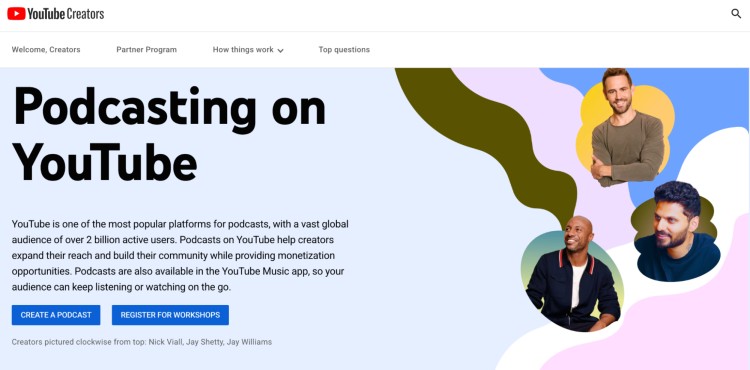
YouTube gives you a video edge and shows up in YouTube Music too.
Here’s how to get your podcast on YouTube for free:
- Create your podcast in YouTube Studio: Click “Create” > “New podcast.” Add your title, description, and square thumbnail (3000×3000 px). Choose public or private.
- Or turn a playlist into a podcast: Go to Playlists, click the menu next to your existing one, and choose “Set as podcast.”
- Upload episodes or use your RSS feed: Post videos directly or import your audio show with an RSS feed.
- Get extra visibility: You’ll get a “Podcast” badge, better search placement, and automatic YouTube Music distribution.
- Track analytics: See views, watch time, and audience insights right inside YouTube Studio.
- Use video for more views: Podcasts with hosts on camera get twice the views. Not keen on video? Use audio with simple visuals instead.
Tip: Make your thumbnail clear and eye-catching. That’s what grabs attention when scrolling through podcasts.
10 Strategies for a successful podcast
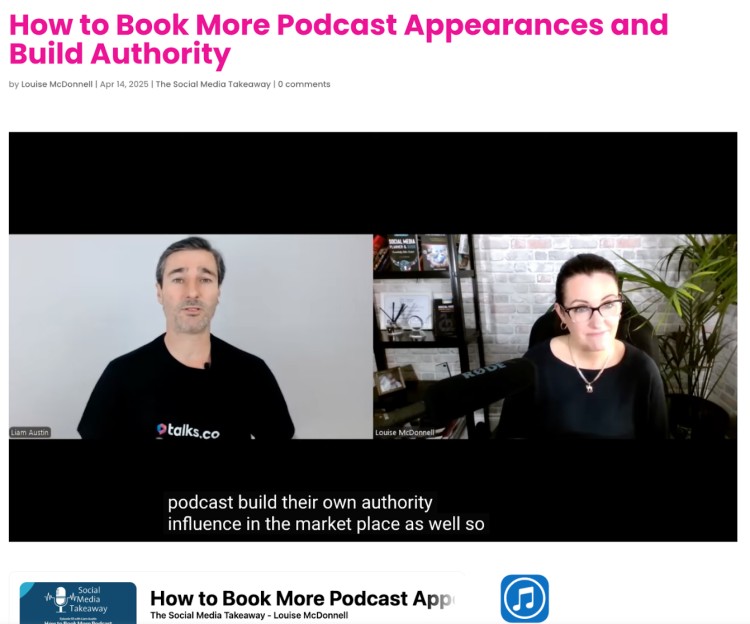
Want your podcast to stand out without following the usual rules? Try these fresh ideas that work for all types of podcasts:
- Keep it real, not perfect: People connect with your personality way more than fancy editing. That’s what makes a good podcast.
- Share bite-sized clips: Chop your episodes into quick, juicy snippets for social media.
- Mix up your style: Switch between solo chats, interviews, stories, or even listener Q&As to keep it interesting.
- Let your listeners steer: Ask them what they want to hear next. It’s a win-win.
- Use silence: Here’s a podcasting 101 secret. Pauses aren’t awkward, they add weight to your words.
- Bring in guests from outside your circle: Different viewpoints spark fresh conversations.
- Shake up your intro: Start with a hook or skip the usual spiel to grab attention fast.
- Record a bunch, but drop episodes steadily: Batch it, then stay consistent with releases.
- Keep the goofs: Mistakes and bloopers show you’re human and relatable.
- Give a peek behind the scenes: Share what happens off mic to build a real connection and community around your podcast with your fans.
Best Free Podcast Tools
Starting your podcast without a budget? No problem. Here’s a full list of the best free tools you can use to record, edit, design, and publish your podcast without cutting corners on quality.
5 Free podcast recording tools
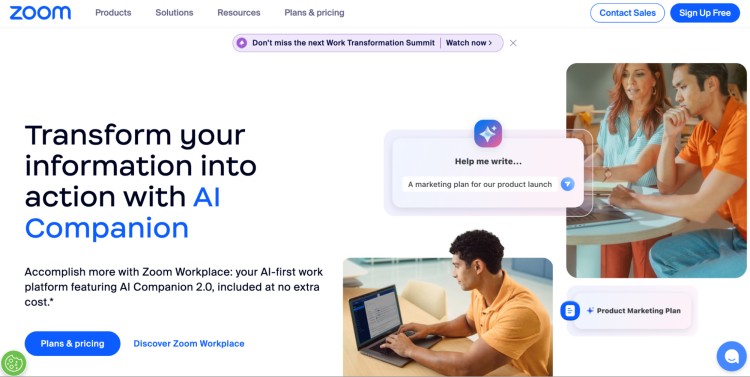
Need to record interviews, solo episodes, or guest chats from your laptop or phone? These tools help you get crisp audio, no studio required.
- Riverside.fm (free plan): Studio-quality audio and video recording with local backups, perfect for remote interviews.
- Cleanfeed (browser): High-quality multi-guest recordings with no software downloads needed.
- Spotify for Podcasters (mobile): Record and publish straight from your phone.
- OBS Studio: Record video and audio with studio-style quality and full control.
- Zoom: Record interviews or guest episodes with separate audio tracks.
Check this out to learn how to record a podcast.
5 Free podcast editing tools
Once you’ve got your raw audio, these podcast audio editing tools help you clean it up. Cut out pauses, background noise, and all the “uhh…” moments.
- Audacity: Full-featured desktop editor for trimming, leveling, and exporting.
- Descript (free plan): Edit by deleting words in a transcript. Great for solo creators.
- Ocenaudio: Lightweight, fast, and beginner-friendly with real-time effects.
- Auphonic: Level your audio and reduce noise automatically (free for 2 hours/month).
- Pro Tools Intro: Industry-level editing, minus the price. Free version of the same tool used on top music and film projects.
5 Free podcast cover art + design tools
You’ll need eye-catching artwork to stand out in the podcast directories. These tools make it easy even if you’ve never touched design software.
- Canva: Podcast-specific templates, thumbnails, and audiograms.
- VistaCreate: More stylized visuals with animated options and professional fonts.
- Adobe Express: For animated social graphics and podcast promos.
- Remove.bg: Automatically remove background from guest headshots or cover art.
- Kapwing: Create audiograms and waveform visuals for social.
5 Free podcast hosting platforms

You’ll need a home for your podcast so listeners can find it on Spotify, Apple, Google, and more. These free hosting tools help you publish and distribute your episodes without needing a paid plan.
- RSS.com (free plan): Unlimited episodes, analytics, and major platform distribution.
- Podomatic (free plan): Basic podcast hosting and distribution, good for beginners.
- Spreaker (free speech plan): Analytics, basic monetization, and directory submissions.
- Pinecast (referral-based free plan): Includes analytics and a clean player.
- OnTheFly: Live podcasting, editing, and multistream tools in one spot. Easy for beginners.
Where to Start a Podcast for Free
Once you’ve got your mic, a few solid episode ideas, and maybe a name like “Soulful Selling” or “The Burnt-Out Coach Podcast,” the next question is: where do I actually start?
These platforms let you record, upload, host, and share your podcast with zero upfront cost and no sketchy catch.
Best place to start a podcast for free
You want somewhere that’s simple, solid, and gets your podcast listed in all the right places. These are the go-tos if you’re just starting out.
- Podcastics: Offers a one-month free trial. Great for beginners, especially if you want to monetize your podcast early on.
- YouTube: Best for video podcasters. Set up a playlist and get discovered via YouTube Music.
- RedCircle: Good for growing and monetizing right away.
- Buzzsprout: Free tier lets you test the waters with up to 2 hours/month.
Where to make a podcast for free
These podcast platforms let you actually create your show from idea to full episode with built-in recording and editing tools.
- Ocenaudio: Lightweight audio editor, great alternative to GarageBand for Mac users.
- WavePad: Lightweight audio editor with recording features and effects.
- Camtasia (free trial): Video recording and editing software, good for screen recording and video podcasts.
- Reaper (free trial): Powerful audio editor with full multitrack support and plugin compatibility.
- Zencastr (free trial): Web-based remote recording with separate tracks and simple editing.
Where to upload podcast for free
Once you’ve got an MP3 file, you’ll need somewhere to upload and share it with the world. These platforms offer free hosting and distribution.
- Podbean: Upload, schedule, and share with built-in landing pages.
- Castbox Creator Studio: Fast uploads and a growing mobile audience.
- Transistor.fm (free trial): Try out premium features for your launch month.
- Zencast.fm: Clean backend and one-click platform distribution.
Free podcast hosting sites
Your hosting site is your podcast’s home base. The place where all your episodes live before they’re sent out to Spotify, Apple, etc.
- Spotify for Podcasters: The most beginner-friendly all-in-one option. Free hosting with unlimited episodes and full analytics.
- RSS.com (free plan): Hosts your podcast, distributes it widely, and provides stats like listen time and audience location. No payment required to start.
- Podbean (free tier): Gives you 5 hours of free hosting to start. Ideal for shorter shows, pilot seasons, or coaches testing a new concept.
- Trebble.fm: Simple podcast hosting and easy distribution for new creators.
How to Make a Private Podcast for Free
Private podcasts are perfect for sharing gated content like client-only trainings, paid bonus episodes, or insider updates without making them public on Spotify or Apple.
Here’s how to set one up for free (or close to it).
- Use a platform with gated access: Tools like Patreon, Buy Me a Coffee, and Memberful let you lock content behind a paywall or invite-only access.
- Upload your private episodes: Record and edit as usual. Then add your bonus content to your private feed. These won’t show up on podcast directories like Spotify or Apple.
- Share your private RSS link: Each supporter gets their own link to listen in their podcast app. Most platforms handle this for you.
- Keep it high-value: Use it for premium episodes, Q&As, mini trainings, or client exclusives. Easy win for adding value and recurring income.
- Tease it on your public feed: Drop a short preview episode and link to the private one to bring people in.
Free, Fast, and Foolproof
You don’t need a studio, a producer, or a thousand-dollar mic to launch something people want to hear. You just need a clear message, a scrappy setup, and the right tools. Most of which you already have or can get for free.
Now that you know how to start a podcast for free, the only thing left is to get it in front of people who care.
That’s where Talks comes in.
Create your free Talks Creator Profile, get featured on the right shows, and start building your podcast authority on autopilot.
Create Your Free Talks Creator Profile Now
You’ve got the podcast. We’ll help get you heard.


